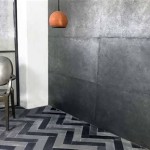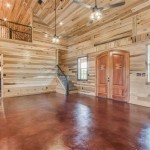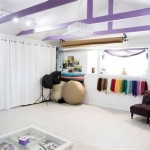How Much Do Interior Decorators Charge Per Room?
Determining the cost of interior decorating projects is a complex process, largely dependent on factors like the decorator's experience, the scope of the project, the location of the property, and the chosen pricing structure. While some decorators bill hourly, others prefer fixed rates per room or percentage-based fees. Understanding these variables is crucial for homeowners and prospective clients aiming to budget for interior design services.
Several pricing models are commonly employed within the interior decorating industry. The best approach for a particular project will depend on its unique needs and the decorator's preferred method of operation. This article will delve into these models, offering a clear framework for understanding the cost structures associated with engaging an interior decorator by room.
Fixed Rate Per Room: Understanding the Structure
A fixed rate per room offers a straightforward and predictable budgeting option. The decorator assesses the room in question, establishes a set fee based on the anticipated work involved, and presents this price to the client. This lump-sum payment generally covers the decorator's design services, including space planning, color palette selection, furniture sourcing, and project management specific to that room. It is important to understand that furniture, accessories, and installation costs are typically billed separately and are not included in the initial fixed rate.
The appeal of a fixed rate lies in its transparency. Clients enter the project knowing exactly how much they will pay for the decorating services themselves. This allows for more effective financial planning and reduces the risk of unexpected expenses linked to hourly billing. However, it is essential to carefully review the scope of services included in the fixed rate. For instance, does the fee cover revisions to the design plan? What level of project management is involved? Clear communication with the decorator regarding these details is paramount to avoid misunderstandings.
The actual fixed rate charged per room can fluctuate significantly. Basic decorating services for a smaller room, such as paint selection and furniture rearrangement, may cost considerably less than a complete overhaul of a large living room with custom furniture design and extensive renovations. Geographic location also plays a key role. Decorators in metropolitan areas with a higher cost of living often charge more than those in smaller towns or rural areas. A detailed proposal from the decorator should explicitly outline the services included in the fixed rate, ensuring a mutually agreeable understanding of the project scope.
Furthermore, variations may exist in how decorators define a "room." A large open-concept living and dining area might be considered a single room by some, while others may treat it as two separate spaces. Similarly, a master bedroom with an attached bathroom and walk-in closet could be priced as either a single project or three individual rooms. These nuances highlight the importance of a precise definition of "room" and a clear agreement on what the fixed rate encompasses before commencing the project.
Factors Influencing the Per-Room Cost
Numerous elements contribute to the overall cost of decorating a room. These factors, which directly influence the price quoted by the decorator, can be broadly categorized as project scope, material selection, labor requirements, and the decorator's experience and reputation.
The scope of the project is perhaps the most significant cost driver. A simple refresh, involving minor cosmetic changes like painting and accessory updates, will naturally be less expensive than a complete renovation that requires structural alterations, electrical work, or plumbing modifications. Extensive renovations often necessitate the involvement of contractors and specialists, which will contribute to the overall project budget.
The selection of materials significantly impacts the final cost. High-end fabrics, designer wallpapers, and custom-made furniture will command a premium price compared to readily available, mass-produced alternatives. The decorator's access to trade discounts can sometimes mitigate these costs, but it is essential to discuss material preferences and budget constraints with the decorator from the outset of the project.
Labor costs extend beyond the decorator's fee. Depending on the scope of the project, additional labor might be required for tasks such as painting, wallpaper installation, carpentry, and electrical work. These costs are typically billed separately and should be clearly outlined in the project proposal. Complex installations, such as custom-built cabinetry or intricate lighting systems, will inevitably require more specialized and potentially more expensive labor.
The experience and reputation of the interior decorator also play a crucial role in determining their fees. Established decorators with a proven track record of successful projects and satisfied clients generally command higher rates. Their expertise and design sensibilities can justify the premium, as they often bring a wealth of knowledge and creative solutions to the project. However, newer or less experienced decorators may offer more competitive pricing to attract clients and build their portfolios. It is vital to weigh the benefits of experience against budget constraints when choosing a decorator.
Geographic location is another important consideration. Decorators in major metropolitan areas, where demand is high and operating costs are elevated, typically charge more than those in smaller cities or rural regions. The cost of labor, materials, and even transportation can contribute to this geographic disparity. Researching local decorators and comparing their pricing structures is a prudent step in establishing a reasonable budget for the project.
Alternative Pricing Models and Their Implications
While fixed rates per room offer a predictable cost structure, other pricing models are available and may be better suited to certain projects. These alternatives include hourly rates, percentage-based fees, and cost-plus arrangements. Each method has its advantages and disadvantages, and understanding these nuances is crucial for making an informed decision.
Hourly rates are often used for smaller projects or consultations where the scope of work is less defined. The decorator bills the client for each hour spent on the project, including design work, sourcing materials, and project management. This model can be beneficial for clients who only need limited assistance or have a clear vision of their design goals. However, it can be challenging to predict the total cost accurately, as the final bill depends on the time spent completing the project. Careful tracking of hours and clear communication regarding the hourly rate are essential for maintaining transparency and avoiding budget overruns.
Percentage-based fees involve charging a percentage of the total project cost, including the purchase of furniture, accessories, and materials. This model is commonly used for larger projects with significant procurement requirements. The percentage typically ranges from 10% to 20%, depending on the decorator's experience and the complexity of the project. While this approach can provide a fair compensation structure for the decorator, it places the onus on the client to closely monitor expenses to avoid unexpected cost increases.
Cost-plus arrangements involve the decorator charging their direct costs for materials and labor, plus a markup or fee to cover their overhead and profit. This model can be transparent, as the client has access to detailed invoices and cost breakdowns. However, it requires a high degree of trust between the client and the decorator, as the markup can be subjective. It's vital to negotiate the markup percentage or fee structure upfront and establish clear cost-control measures to ensure the project remains within budget.
Hybrid models are also common, combining elements of different pricing structures. For example, a decorator might charge an hourly rate for initial consultations and design development, followed by a fixed rate per room for implementation or a percentage-based fee for procurement. These hybrid approaches offer flexibility and can be tailored to the specific needs of the project and the preferences of both the client and the decorator.
Regardless of the chosen pricing model, it's imperative to obtain a detailed written agreement outlining the scope of work, the fees charged, the payment schedule, and any other relevant terms and conditions. This agreement serves as a roadmap for the project and helps to prevent misunderstandings and disputes. Open and honest communication throughout the process is key to a successful and satisfying interior decorating experience.
Ultimately, the cost of hiring an interior decorator per room is a dynamic figure influenced by a confluence of factors. Thorough research, clear communication, and a well-defined project scope are essential ingredients for navigating the process effectively and achieving the desired design outcome within a reasonable budget.

Fixr Com Interior Designer Cost Fees

Fixr Com Interior Designer Cost Fees

How Much Does An Interior Designer Cost In 2024 Decorilla

How Much Does An Interior Designer Cost In 2024 Decorilla

How Much Does An Interior Designer Cost In 2024 Decorilla

How Much Interior Designer Charge In Designcafe

How Much Does An Interior Designer Cost 2024 Forbes Home

How Much Interior Designer Charge In Designcafe

How Much Interior Designer Charge In Designcafe

How Much Does An Interior Designer Cost In 2024 Decorilla
Related Posts








